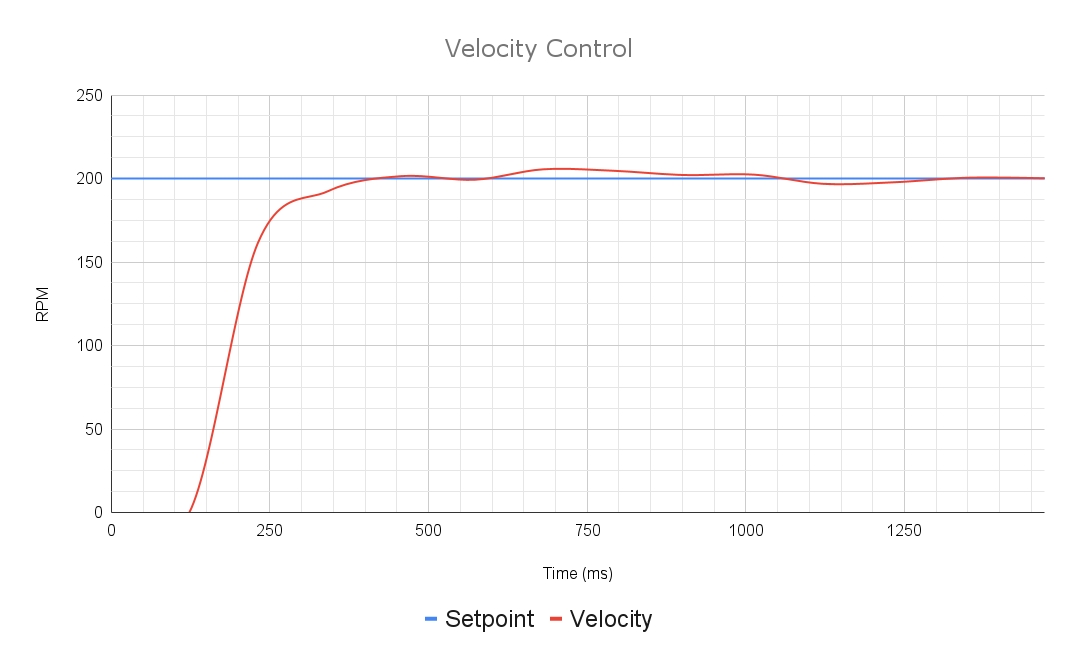Velocity Control Mode
Velocity Control uses the PID controller to run the motor at a set speed in RPM (or configured conversion factor units).
Want to control the acceleration of your velocity controller? See MAXMotion Velocity Control for an improved version of Velocity Control with more features and control.
It is called in the same way as Position Control:
m_controller.setReference(setPoint, ControlType.kVelocity);API Docs: setReference
using namespace rev::spark;
m_controller.SetReference(setPoint, SparkBase::ControlType::kVelocity);API Reference: SetReference
Velocity Control mode will turn your motor continuously,. Be sure your mechanism does not have any hard limits for rotation.

Last updated
Was this helpful?

